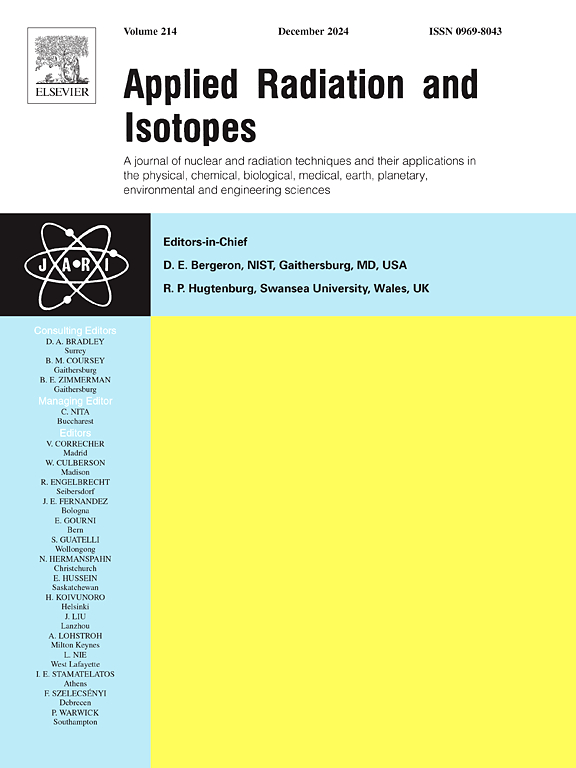Evaluation of occupational doses in surgical staff via Monte Carlo simulation
IF 1.8
3区 工程技术
Q3 CHEMISTRY, INORGANIC & NUCLEAR
引用次数: 0
Abstract
This study evaluated radiation exposure during fluoroscopy-guided surgical procedures using Monte Carlo simulations. The methodology involved modeling femoral osteosynthesis scenarios, representing both the patient and the occupationally exposed individual (OEI) with a female reference phantom from ICRP Publication 145. The study included 24 simulations, categorized into posteroanterior (PA) and lateral cross (LC) projections, with tube voltages ranging from 60 to 90 kV for PA and 70 to 100 kV for LC. Protective equipment, such as aprons, suspended glass, and curtains, was tested using alternative materials to lead, including bismuth and tungsten. The results demonstrated that bismuth and tungsten exhibited varying levels of radiation attenuation efficiency compared to lead, with performance expressed as percentages relative to lead-based equipment. While certain scenarios showed that bismuth and tungsten outperformed lead in radiation protection, other scenarios highlighted their limitations. For instance, at 90 kV in the PA projection, both materials resulted in significant increases in radiation dose compared to lead.
通过蒙特卡罗模拟评估外科工作人员的职业剂量
本研究利用蒙特卡罗模拟评估了透视引导下外科手术过程中的辐射暴露。方法包括模拟股骨骨植入情景,代表患者和职业暴露个体(OEI),并使用ICRP出版物145中的女性参考幻象。该研究包括24个模拟,分为后前路(PA)和侧交叉(LC)投影,PA的管电压为60至90千伏,LC的管电压为70至100千伏。防护设备,如围裙,悬挂玻璃和窗帘,使用替代材料铅,包括铋和钨进行测试。结果表明,与铅相比,铋和钨表现出不同程度的辐射衰减效率,其性能以相对于铅基设备的百分比表示。虽然某些情况表明铋和钨在辐射防护方面优于铅,但其他情况突出了它们的局限性。例如,在PA投影90千伏时,与铅相比,这两种材料导致的辐射剂量显著增加。
本文章由计算机程序翻译,如有差异,请以英文原文为准。
求助全文
约1分钟内获得全文
求助全文
来源期刊

Applied Radiation and Isotopes
工程技术-核科学技术
CiteScore
3.00
自引率
12.50%
发文量
406
审稿时长
13.5 months
期刊介绍:
Applied Radiation and Isotopes provides a high quality medium for the publication of substantial, original and scientific and technological papers on the development and peaceful application of nuclear, radiation and radionuclide techniques in chemistry, physics, biochemistry, biology, medicine, security, engineering and in the earth, planetary and environmental sciences, all including dosimetry. Nuclear techniques are defined in the broadest sense and both experimental and theoretical papers are welcome. They include the development and use of α- and β-particles, X-rays and γ-rays, neutrons and other nuclear particles and radiations from all sources, including radionuclides, synchrotron sources, cyclotrons and reactors and from the natural environment.
The journal aims to publish papers with significance to an international audience, containing substantial novelty and scientific impact. The Editors reserve the rights to reject, with or without external review, papers that do not meet these criteria.
Papers dealing with radiation processing, i.e., where radiation is used to bring about a biological, chemical or physical change in a material, should be directed to our sister journal Radiation Physics and Chemistry.
 求助内容:
求助内容: 应助结果提醒方式:
应助结果提醒方式:


